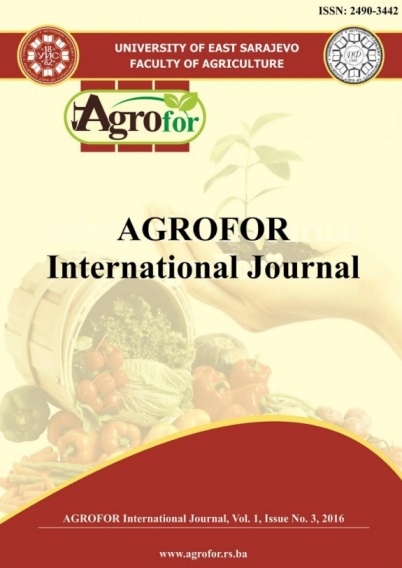INVESTIGATION ON TOMATO SPOTTED WILT VIRUS INFECTING PEPPER PLANTS IN HUNGARY
DOI:
https://doi.org/10.7251/AGRENG1603012AAbstract
In Hungary resurgence of Tomato spotted wilt virus (TSWV) frequently causes
heavy crop losses in pepper production since the mid nineties. Management of
TSWV control was first directed against the thrips (using different insecticides or
plastic traps), and against weeds as host plants of the virus and the thrips. Later on
Tsw resistance gene was introduced from Capsicum chinense PI 152225 and PI
159236 into different types of pepper. In 2010 and 2011 sporadically, but in 2012
more frequently a resistance breaking (RB) strain of TSWV on resistant pepper
cultivars was observed in the Szentes region (South-East Hungary). The presence
of a new resistance breaking strain was demonstrated by virological (test-plant,
serological and RT-PCR) methods. Previously, the non-structural protein (NSs)
encoded by small RNA (S RNA) of TSWV was verified as the avirulence factor for
Tsw resistance, therefore we analyzed the S RNA of the Hungarian RB and wild
type (WT) isolates and compared to previously analyzed TSWV strains with RB
properties from different geographical origins. Phylogenetic analysis demonstrated
that the different RB strains had the closest relationship with the local WT isolates
and there was no conserved mutation present in all the NSs genes of RB isolates
from different geographical origins. According to these results, it is concluded that
the RB isolates evolved separately in geographic point of view and according to the
RB mechanism. In order to find new genetic sources of resistance in Capsicum
species 89 lines from Capsicum annuum, C. chinense, C. frutescens, C. chacoense,
C. baccatum var. baccatum, C. baccatum var. pendulum and C. praetermissum
were tested with the Hungarian TSWV-RB isolate.

